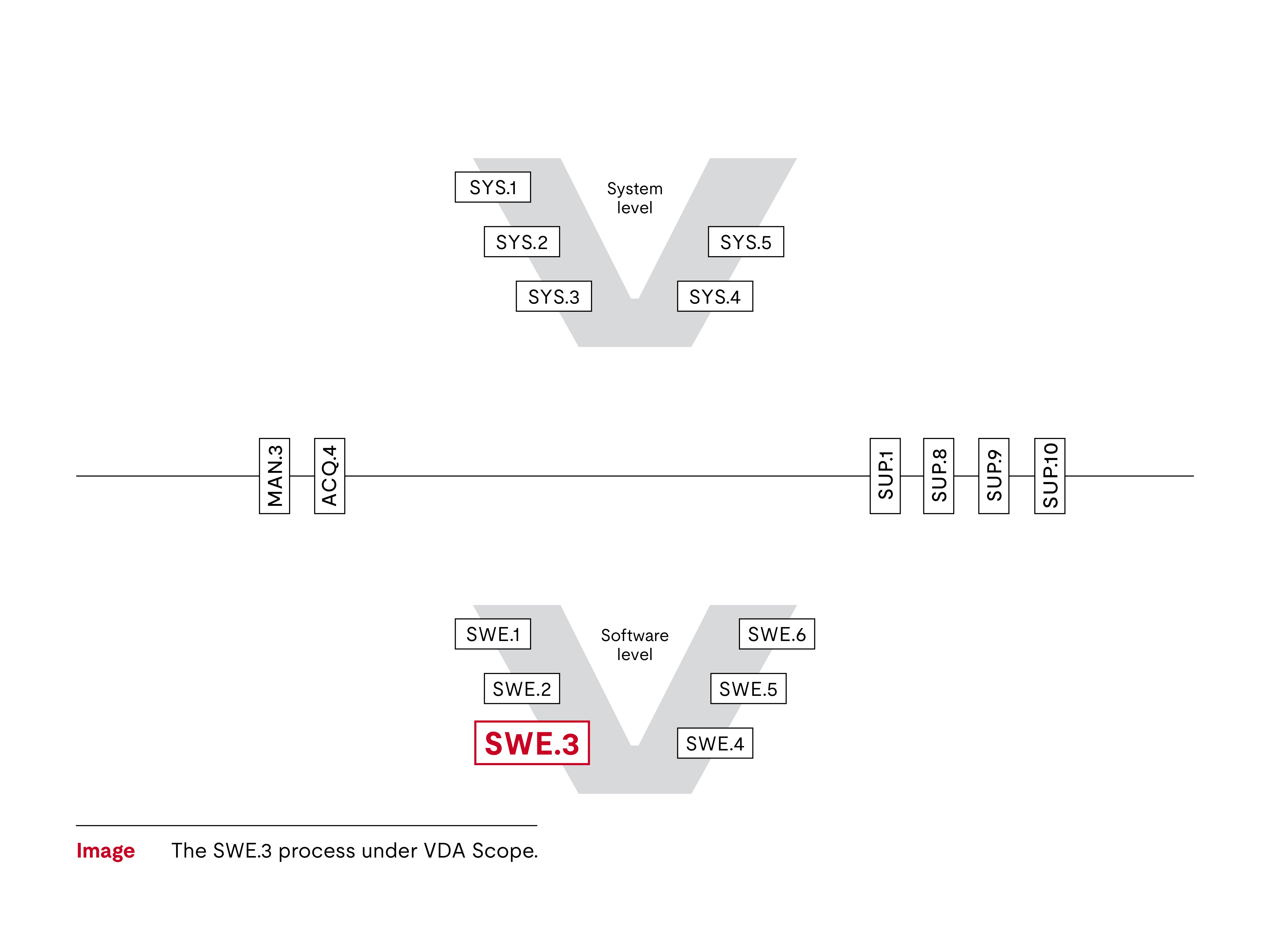
Process ID: SWE.3
Process group: Software Engineering
Automotive SPICE® is a trademark of VDA QMC.
The Software Detailed Design and Unit Construction process in Automotive SPICE® (also known as SWE.3) helps your organization provide an evaluated, detailed design for the software components, specify the software and produce the software units.
Many organizations and project teams struggle with understanding how to document the detailed design. However, the process does not need to become daunting. The following are the most important aspects of Change Request Management in Automotive SPICE®.

Level of detail corresponds to level of coverage
An effective way to approach establishing the appropriate level of detail is to focus on the purpose of the detailed design. Primarily, it is the basis for the implementation of the code and the unit test. In particular, the unit verification requires a detailed description, and the level of coverage must be considered.
For safety-critical software, ISO 26262 provides guidance. For non-safety software, at least C0 or statement coverage is typically required, but some customers will require C1 or branch coverage. The higher the coverage goal, the greater the level of detail required in the detailed design. For example, C1 coverage is expected for an ASIL-B classified module, meaning the detailed design should identify the different branches of the software.
Establish interfaces to support proper testing
Often, external and internal interfaces lack detailed descriptions. Interface documentation should include:
- Names
- Types
- Units
- Resolutions
- Ranges
- Default-values
Without this information, proper testing of the interfaces in the unit test is impossible. It is acceptable if the external interfaces are described on the architectural level and tested in the Software Component Verification and Integration Verification process (SWE.5).
Timing of documentation
Describe the detailed design the code is implemented. The unit test should determine whether the code fulfils the detailed design. If the detailed design is written after documenting the code, the point of the unit test is lost.
The detailed design should be derived from the architecture rather than the code. The content of documentation and all the tests do not make sense when the chain is broken. The detailed design and code can also be developed step by step.
Why choose UL Solutions Software Intensive Systems for Automotive SPICE® support?
UL Solutions Software Intensive Systems can support automotive original equipment manufacturers (OEMs) and suppliers in:
- Achieving the required capability levels within key development processes.
- Systematically improving existing workflows and methods.
- Evaluating the status of process improvements through formal assessments and gap analysis.
- Fulfilling the requirements of Automotive SPICE® in harmony with security, functional safety and agile methods.
- Training staff and assessors.
Learn more about the Automotive SPICE® Software Detailed Design and Unit Construction process
To further your understanding of the Automotive SPICE® Software Detailed Design and Unit Construction process (SWE.3), watch our video.
Get connected with our team
Thanks for your interest in our products and services. Let's collect some information so we can connect you with the right person.
